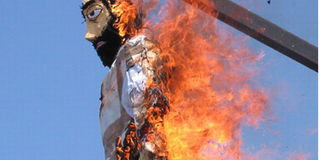Myths from across the world about Easter

Rabbits are believed to be associated with the springtime since ancient time. And it is believed that the Anglo-Saxon goddess of spring, Eostre had a hare as her companion.
The hare is a symbol of fertility and rebirth. And later Christians changed the symbol of the hare to the Easter bunny.
The tradition is that the Easter bunny leaves Easter eggs on Easter Sunday. In reality, parents hide eggs in the garden and the children go on an egg hunt to find them.
The idea of an egg-laying rabbit was taken to America in the 1700s. They told their children to make ‘nests’ with their caps and bonnets, and if they were good the Easter bunny would leave them coloured eggs.
Whipping girls with ribbons
Men and boys in the Czech Republic and Slovakia whip girls and women with decorated instruments, usually adorned with colourful ribbons. The Easter Monday tradition is not meant to be painful but to encourage beauty and good health.
Throwing of pots on the street
In Greece, the local people throw pots out of their windows to “throw away” evil. The Christians threw away old pots on Easter, saying it marked a new beginning.
Because of all these traditions, the Easter pot throwing ceremony was born. When the first bell of the First Resurrection is heard, believers throw pots out of their windows, smashing them onto the streets.
Those specially made ceramic pots can be more than a metre tall and they are filled with water to make a louder splash.
The noisy custom lasts three to five minutes and is watched by thousands of people especially tourists.
The Crucifixion
In some places, some people put themselves up for crucifixion, through punishment that Jesus endured, from flogging, cutting, wearing crowns of thorns to allowing themselves to be nailed to a cross. They are, however, not left there too long to endanger their lives.
This is especially practised in the Philippines to ask forgiveness for the sins committed over the year for oneself and family.
Following the last painful events in the life of Christ, these people feel a closer connection with their religion and their God, and a feeling of ease or forgiveness for their sins.
Burning of Judas
In several countries it is customary to burn an effigy of Judas Iscariot widely known as the betrayer of Jesus.
The effigy is usually hanged by the neck before being burnt on Friday or Saturday before Easter.
For added touch, some people stuff it with fireworks or give it the face of an unwanted politician.
They burn the effigy and scatter a handful of ashes on the tombs. And before that every Holy Thursday, in Greece children walk from door to door asking for sticks to build the wooden model of Judas.




